New AMD-based HPE SimpliVity 325

The latest model in the HPE hyperconverged portfolio, is now shipping and available worldwide.
Built on the HPE ProLiant DL325 Gen10 server platform, the HPE SimpliVity 325 provides security and performance in a highly dense, 1U model.
HPE SimpliVity 325 Gen10, based on the HPE ProLiant DL325 Gen10 Servers, is a compact, scalable, 1U rack-mounted building block that delivers integrated server, storage, and storage networking services. The HPE SimpliVity 325 Gen10 Server is the secure and versatile single socket server for virtualization and I/O intensive workloads is ideal for remote office or space-constrained locations.
This 1P, 1U server delivers an exceptional balance of processor, memory and I/O for 2P performance at 1P TCO.
Get the most out of your virtualized environment with this versatile server delivering a lower hypervisor software cost and better cost per virtual machine (VM).
HPE InfoSight: Now on HPE SimpliVity
HPE InfoSight has been extended to HPE SimpliVity HCI offerings. HPE is integrating HPE InfoSight AI operations to provide customers with global visibility into detailed system, performance and capacity utilisation – enabling predictive data analytics and recommendations for system and performance optimisation. Automatically predicts and resolves 86% of problems before you even know there is an issue.
Check out the specifications below
Nutanix and HPE – A great partnership
Nutanix and HPE announced a global agreement in April this year to produce Nutanix Hyper Converged Infrastructure (HCI) available on the HPE ProLiant Server platform known as Nutanix DX Appliances.
This offering will also be available on a consumption-based model utilising HPE GreenLakes Infrastructure as a service. This means more flexibility and cost savings using a pay per use model so you can start implementing this new technology today, without the worry of upfront costs and planned budgets.
Nutanix DX Appliances are now available and ready to ship and will be available as a consumption-based model using the HPE GreenLake solution from October 2019.
Nutanix are market leaders for Hyper-Converged Infrastructure (HCI) and have added HPE ProLiant Server as a hardware platform choice, with such strong reputations as market leaders in their own rights this joint partnership means Nutanix DX Appliance combines cutting edge technologies to bring this new product to the market.
XMA are a platinum HPE partner and a Nutanix Scaler partner meaning we have strong alliances with both vendors and have unrivalled in-house technical resource, to help plan and implement this new technology across your organisation.
What does it mean for your organisation?
More choice with Nutanix in terms of Hardware platforms from XMA; Nutanix, HPE, Lenovo or Dell as well as broad Hypervisor choice; Nutanix AHV, VMware vSphere and Microsoft Hyper-V. Nutanix Software on HPE Hardware, with world class support from both organisations.
Contact us today to find out more about this exciting new announcement
HPE InfoSight: A smart move for Colleges and Universities
HPE InfoSight and its recommendation engine can pave your institutions path towards an automated, self-learning and self-managing data centre that can free your IT department to focus on creating value and allows your institution to turn exponentially growing data into valuable, actionable insights.
Learn how it ensures 99.9999% guaranteed availability and predicts and resolves 86% of problems before they can disrupt the business of learning, research, and administration. Analysing millions of sensors a second, everyone benefits as the university’s systems grow continuously smarter and more reliable.
Download the whitepaper below to find out more

Breaking the Rules with Intel® Optane™

With many Schools, Universities and Education Establishments needing to provide fast, effective systems, there is pressure on the budgets to upgrade their technology. The good news is Intel have ‘broken the rules’ of previous system memory and introduced breakthrough technology that allows users to take advantage of unprecedented responsiveness and amazing performance.
When used with HDD, Intel Optane memory offers SSD like PC experience that delivers high speed and responsiveness without compromising on storage capacity. The cost for Intel Optane starts from around £37 which means that you can add an accelerator to your system without the high expense of SSD, especially if you need high capacity storage. Optane is compatible with Intel 7th Gen technology motherboards/processors and later, with so many different types of users that can benefit from this.
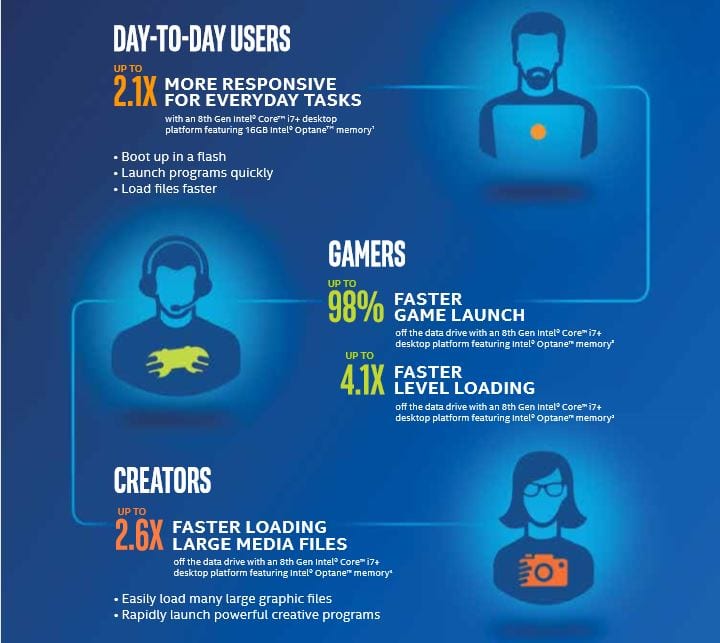
What is Intel® Optane™?
Available in 16GB or 32GB modules which simply ‘slot’ into your motherboard, Intel Optane acts as an accelerator for your system. It works with a unique combination of 3D XPoint memory media with Intel’s advanced system memory controller, interface hardware, and software IP. What does this mean? It means a smart and adaptable system accelerator that adjusts to your computing tasks — making everything you do faster, smoother, and easier. The intelligent software automatically learns your computing behaviours to accelerate frequent tasks and customise your computer experience, meaning faster searching, faster loading, and a faster system.
How does it benefit me?
Performance gains of upto 28% Faster overall system performance, upto 14x Faster hard drive access, and upto 2x faster everyday task responsiveness
Operational excellence with 3d XPoint Technology gives better endurance and faster than previous NAND Memory.
Predictability where Intel Optane learns to prioritise your files accessed regularly to have them available for you when you need them.
Fast SSD like transfer interface to rival SSD storage. Why not look at options to increase your storage capacity with HDD for lower cost than SSD.
How do I buy?
The best way to upgrade to Intel Optane is to speak to one of our specialists who can talk to you more about the benefits and explain the next steps. If however you want to buy Optane without speaking to our team you can make a purchase via the XMA store.
store.xma.co.uk
Contact us on 0115 846 4000 or use the contact form below to get in touch today
Doing a little extra with “Little Extras”
With the unveiling of the 2018 budget last week, it was announced that the government would be investing an additional £400m into schools across England and Wales.
This additional investment was described as giving schools the extra budget for “the odd little piece of kit that they need*” – more specifically, “whiteboards and a couple of computers*”. This will be a one off capital payment direct to schools, averaging £10k per primary and £50k per secondary school.
The government have experienced a huge backlash across the country, with Geoff Barton, general secretary of the Association of School and College Leaders, saying “It is a sign of the government’s priorities that it is spending more on fixing potholes than on fixing the school funding crisis.”**
We agree that it is a small investment, and it certainly isn’t enough to help schools stretch to all the necessities they need. However, with our help we can make that additional budget go a lot further than just “a few little extras”. Our experience in doing more with less has supported schools in meeting their goals despite restricted budgets. Innovative technology solutions needn’t cost the earth. They just require careful planning, consideration and future proofing.
We pride ourselves in taking a consultative approach, by taking the time to understand your environment, challenges you currently face, and what your objectives are as a school.
Our specialist Schools team are ready to help you do a little extra with your “little extras”. Get in touch with us today so we can help your budget stretch further.
If you would like a member of our Schools team to contact you to discuss doing a little extra with “Little Extras”, please complete the fields below:
*The Guardian, 2018
** Schools Week, 2018
5 ways to meet changing IT demands
Today’s organisations must have the infrastructure in place to handle both current and emerging workloads.
Here are 5 ways that organisations can look at to meet changing demands in IT.
1. Flexible architecture
Meet today’s workload demands and easily reconfigure your system to respond to changing needs without disruption.
2. Agile IT management
Get unified control, simplified administration and intelligent automation of all system resources across 1000s of nodes and 100s of chassis with Dell EMC OpenManage Enterprise – Modular Edition.
3. Storage density for data-intensive applications
Optimize storage capacity at a granular level for specific workloads, and add solid-state flash and hard-disk drive resources as needed.
4. Responsive design
Responsive Design. Protect your investment with support for at least three future technology cycles with Multi-Generation Assurance.
5. Scaleable fabric and fast networking interconnects
Transfer even the largest data sets quickly and efficiently with support for high-speed interconnects such as PCI-e Gen 4, 25/50/100 Gigabit Ethernet and Fibre Channel over Ethernet (FCOE).
Download this FREE report and find out how the modular design of Dell EMC PowerEdge MX can help you scale, secure and simplify your IT.
We’ve got more than 30 years’ experience providing IT solutions for organisations of all sizes.
Choosing the Right Technology: IT procurement Tips for SMEs
A well-considered investment in new technology is an investment in your business’ long-term future.
It’s an exciting time for any organisation. The right tech, whether hardware or software, can transform a firm’s growth potential, helping your business take the next step in its success story. However, it can also be a stressful time as smaller firms don’t necessarily have the kind of in-house IT procurement expertise needed to make important tech investment decisions with confidence.
With so many alternatives on offer, working out the best IT solution for your business isn’t always straightforward – and the implications of getting it wrong can be costly. Here are our thoughts on some of the steps that smart SMEs are taking in order to make sure their technology investment decisions have the desired impact
1. Start at the end
Just like any kind of capital expenditure, the intended benefits of the investment should be well understood before the procurement process starts. The primary reason that SMEs buy new technology is the need to improve performance or optimise a business process, so look at the processes in your business and ask, what should or could be done better, more quickly or more efficiently?
Often the best people to identify these pain points are your workforce. A staff survey can be an effective way to work out how much time is being spent on different activities, which can help to identify and prioritise inefficiencies.
Then you can ask yourself, could technology help to address this?
Are staff spending hours on end in team meetings, for example? Perhaps they need a more effective tool for collaborating, like an Instant Messaging system or a project management app?
Are they taking an age to locate customer files in filing cabinets? In that case, a scanning solution could make that process far more efficient and productive, freeing them up to make an impact elsewhere in the business. A business should only invest once it has clearly identified the processes it needs to change and how new technology can effect that change.
2. Consult and report
So, now you know what you want your new technology to be able to accomplish, it’s essential to consult all the staff who will ultimately be using it about the functions they need.
These are not vague ambitions, but clear objectives that tie in to the needs of the business.
You can also ask them about any other desirable features that would help them do their jobs better.
All these factors should also be ranked according to importance, as budget limitations may not allow you to tick every box, so prioritise the most critical.Some of the issues you will want to consider include usability, security, scalability, functionality, reliability, quality, the provision of support and compatibility with existing systems.
Once your analysis is complete, create a written report that lays out exactly what the investment is designed to achieve, that can be shared with, and signed off by everyone that will be affected. This document will prove invaluable when it comes to navigating through the huge variety of potential solutions that are available.
3. A systematic solution
The huge amount of technology aimed at SMEs can be seen as both a blessing and a curse.
On one hand, it makes it more likely that there is a product out there that precisely suits your circumstances, on the other, finding it could be a real challenge.
Now you have your comprehensive list of requirements, one option is to create a spreadsheet comparing them against a selection of potential solutions.
You can then start narrowing down the list by working out which option fulfils the most criteria to find the best solution.
Of course, cost will be a factor too, but look beyond the initial investment to consider the long-term value, such as the print cost per page provided by a new printer.
If this still seems a little overwhelming, then teaming up with a technology supplier could be the way forward.
4. A helping hand
Don’t think of us just as a supplier with a sharp salesman who’s trying to sell you the most expensive solution they can, regardless of its suitability.
We function more like a trusted procurement partner, who can support you through the decision-making process, installation and bedding in of any new technology.
We want to build a long-term relationship with your business, so it’s in our interest to ensure we provide the right long-term solution for you.
We work hard to understand what businesses need from their technology and develop integrated solutions that enable customers to achieve their goals. And work with you to understand the challenges you face, then introduce services and products that will help you to work smarter and stay ahead of your rivals.
5. Teething troubles and training
Most IT professionals will tell you that, however well planned an installation is, some degree of teething troubles are inevitable.
For small businesses, any period of downtime can have a huge impact, so ready access to technical support and training is essential, especially in the first few months.
Again, we can provide some added value by managing the installation process.
Training ensures that your staff are getting all they can out of a new technology, using it to its full potential and generating the maximum positive impact on productivity, as well as delivering a better Return On Investment (ROI). We can offer training, so you have plenty of options to get the right solution for your business.
Learn how organisations from various sectors are deploying technology to their advantage by visiting our Success in Action page.
Why Composable Infrastructure matters to your business
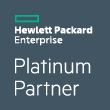
HPE Synergy is the world’s first truly Composable Infrastructure and today’s new hybrid IT engine. Synergy enables you to maintain the structure and security of traditional IT, whilst still having flexibility and speed for new applications.

1. Cloud-like speed
Composable Infrastructure enables DevOps teams to spin up new services in minutes to get new experiences into customers’ hands faster, delivering cloud-like speed from your own secure datacentre. |

2. Single platform
Run traditional applications and cloud-native apps from a single platform that supports everything from bare-metal deployment to virtual machines and containers. This allows IT to align behind a single platform to reduce datacentre complexity and cost. |

3. Software-defined
Intelligent software recognises and automatically integrates compute, storage, and fabric into resource pools that can be aggregated and disaggregated to meet the needs of any application. Template-driven provisioning helps ensure policy compliance and reduces risk exposure. |

4. Operational efficiency
Remove the need to stand up separate siloed environments for different applications. Automated provisioning via templates and a unified API enables application infrastructure provisioning in minutes instead of days, bringing cloud-giant efficiency to your datacentre. |

5. Continuous development
Developers can request exactly the amount of compute, storage, and networking fabric their applications need, directly from code. The unified API aggregates physical resources just like virtual and public-cloud resources, giving developers true infrastructure-as-code capabilities. |

6. Fluid IT
Accelerate application development by giving DevOps teams more control over their environments. Fluid resource pools allow developers to execute non-disruptive changes and to continuously refine applications to meet customer needs as they arise. |

7. IT economics
Template-driven provisioning and non-disruptive updates mean IT spends less time maintaining infrastructure, reducing labour costs. Fluid pools of resources that can be aggregated on demand increase utilisation and reduce over-provisioning and stranded capacity. |

8. Competitive advantages
Bridging the performance and control of dedicated infrastructure with the flexibility of the cloud allows lines-of-business to accelerate delivery of new customer experiences and revenue opportunities to stay ahead of the competition. |

9. Future-proofed datacentre
Be ready for whatever the future might bring with a scalable and extendable infrastructure and robust partner ecosystem that provides a firm foundation for today’s hybrid IT and the capacity and flexibility to take future innovations in stride. |

10. Seamless evolution
Starting with as little as a half-rack of gear, Composable Infrastructure can be deployed easily and incrementally, side-by-side with your existing infrastructure. Deploy it as part of your standard refresh cycle to grow your capabilities at a pace that makes sense for your business. |
If you would like to learn more about any of the technologies mentioned or discuss other ideas for revolutionising your infrastructure, our team are on hand to help. Contact us at info@xma.co.uk or call 0115 846 4000. Alternatively, you can complete our contact form below.
Success for XMA as the 2018 CRN Channel awards shortlist is announced
In its 25th year, many will have been anxiously awaiting this years’ shortlist for the CRN Channel Awards 2018. The awards are the perfect opportunity to share acheivements and recognise those who have made outstanding contributions to the channel. XMA are proud to announce our shortlisting at this years awards.
As the current reigning winners of the CRN Public Sector VAR award in 2017, we have continued to deliver value to our public sector customers. As a result, XMA have been named one of the finalists in the running to be named this years winners. Further to this, XMA have also been shortlisted under the ‘Reseller of the Year (£51m+)’ category, a prestigious title for any reseller in the channel.
Ian Cunningham, Director of Sales & Marketing at XMA had this to say on the news of our shortlistings:
“As competition for the CRN Reseller of the Year and Public Sector VAR of the Year awards is so incredibly high, I am delighted XMA have been shortlisted for both awards for the second year in a row. Last year I was incredibly proud to accept the CRN Award for Public Sector VAR of the year on behalf of XMA, particularly in front of an audience of industry peers.”
“XMA is powered by our people and it is them who make these awards possible through their hard work and focus on our customers. They live our values and make a difference.”
The awards ceremony will take place on the 15th November, where we look forward to celebrating success with other industry peers from across the channel.
2 rules of thumb as you modernise your Data Centre
There are two rules when it comes to modernising your datacentre but what it boils down to is focusing on a good outcome.
Rule #1: Keep it simple
When technology needs an update, some organisations choose to modernise over time, following the same problem-by-problem approach they used to build the original data centre. This piecemeal approach is complex and can be agonisingly slow. What’s worse, all that time and effort won’t necessarily lead to a better end product or even lower costs.
Instead of focusing on daily problems that arise, hyperconverged infrastructure (HCI) lets you focus on the outcome: a simpler data centre that’s cost-effective and easy to manage. HCI takes a building block approach to architecture, consolidating compute, storage, network switching, replication, and backup in a single integrated system. The consolidation of these IT functions onto virtualized hardware can greatly simplify environments that have been divided by siloed point solutions.
VM-centric HCI systems are also simple for IT administrators to manage, and require much less data centre space than traditional IT devices.
Rule #2: Don’t overspend
Hyperconvergence requires some upfront investment, but it can deliver a huge return on that investment. In this study based on research with real world customers, Forrester Consulting found that HCI reduces TCO by 69% on average compared to traditional IT. Converging the entire IT stack – firmware, hypervisor, and data virtualisation software – has additional advantages, according to that same study. Data centre footprint can be reduced 10:1, backups and disaster recovery become simple and straightforward, and upgrades are managed for the whole stack. The most efficient solutions also free up significant staff time, boosting the economic benefits even further. IDC reports an 81% increase in time available to focus on new projects as a direct result of hyperconverged deployment.
Our data centre solutions guarantee high availability, reliability and security for your infrastructure
Read More









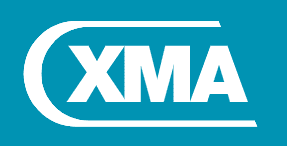

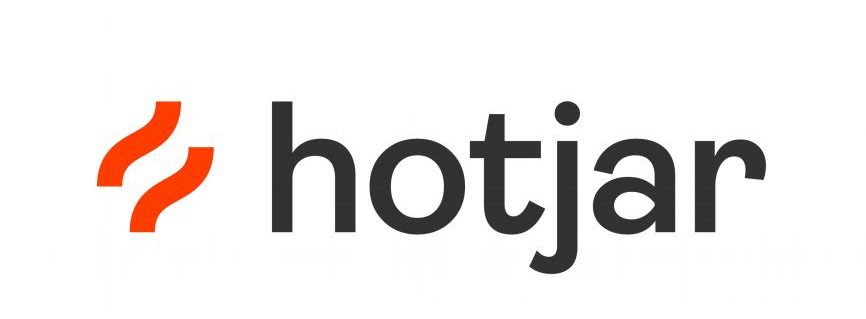 Monitoring by Hotjar
Monitoring by Hotjar